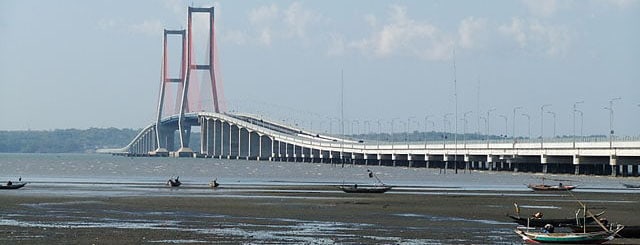The wealthy in Asia are ramping up their exposure to infrastructure investments, in a move that illustrates how disappointing returns from traditional asset classes are pushing yield-desperate investors into some of the most illiquid strategies.


While infrastructure strategies have traditionally been the preserve of large institutional clients, they have recently gained traction among the very wealthy in the region, according to Tino Moores, head of sales for Asia at BNP Paribas Investment Partners, which offers an infrastructure fund through its tie-up with Orion Partners,an Asia-focused asset manager specializing in alternativeinvestments.
“The challenge of finding returns in the public market, as well as the marked-to-market current volatility, have driven private banks clients to turn to illiquid private investments,” Moores says. “These investments offer attractive yields and IRR [internal rates of return] with low correlation to public markets, and are therefore a strong diversifier to investment portfolios.”
Becausethey impose high entry barriers and long lock-ups, these strategieshave historically been chiefly marketed toinstitutionswith long liabilities, such aspensionfunds and insurance companies.
That is starting to change.
Some more wealthy investors seem willing to forego liquidity, attracted by the yields that these strategies claim to deliver. And they would be wrong not to, according toT.K. Chiang,co-founder and managing partner of Orion Partners.There is a strong case to be made for investing into infrastructure strategies.
“With yield compressing as a result of significant global demand, infrastructure is the likely asset class to deliver yield with a conservative risk exposure,” he says.”We believe that there are potential inefficiencies in the infrastructure financing sector where investors can still gain yield disproportionate to the risk taken. We like this asymmetry in risk and reward.” He adds, “Naturally we’re focused on investments which have some level of sovereign credit support.”
The infrastructure fund, previously only marketedto institutional investors, is being gradually rolled out to ultra-high net worth individuals (UHNWIs) through BNP Paribas Investment Partners “one jurisdiction at a time,” according to Chiang.
The high entry threshold mean that only the wealthiest of the wealthy, the UHNWIs, are eligible to invest into these strategies—a mere HNWI doesn’t cut it. “While many alternative investments such as private equity and real estate funds have brought their minimum commitments lower for HNWI, infrastructure funds have not,”says Chiang.”Naturally, only UHNWIs and institutional investors can practically invest in this asset class.”
He believes that the appetite for these strategies is bound to increase among individual investors. “We’re only at the tip of the iceberg in terms of UHNWI demand,”he says, declining to revealhow many clients are currentlyinvested into these strategies.
“We can look to institutional demand as a better measure of actioned interest,” he says, pointing to a recent industry survey showing that institutional investors are looking to increase their allocation to infrastructure by over 50%. “While UHNWI’s interest will lag [institutional interest], we are confident that the momentum of interest will rise rapidly.”



